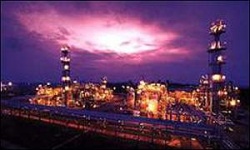IEA cuts global oil demand outlook, citing economy
 Market observers are puzzled over the paradox of weakening economic growth and oil demand indicators on one hand and $110/bbl crude on the other, according to the International Energy Agency (IEA), which cut forecasts for demand growth in 2011 and 2012.
Market observers are puzzled over the paradox of weakening economic growth and oil demand indicators on one hand and $110/bbl crude on the other, according to the International Energy Agency (IEA), which cut forecasts for demand growth in 2011 and 2012.
Projected 2011 production was cut by 200,000 bpd to 89.3mn bpd, while the forecast for 2012 was lowered by 400,000 bpd to 90.7mn bpd.
Not everyone is paying $110/bbl, and refiners with ready pipeline access to heavily discounted crude in the US Midwest are enjoying better margins, unlike their brethren in Europe and elsewhere.
WTI aside, however, benchmark Brent crude since early May has see-sawed in a range of between $105 and $120/bbl.
IEA actions in late June and the broader equity and commodity sell-off seen in early August caused prices to plunge by around $10/bbl each time, but prices stubbornly reclaimed lost ground within weeks, raising new questions about the key drivers of prices.
There are certainly growing concerns about the health of the global economy, the IEA said. Government debt in the OECD and the spectre of inflationary pressures and currency protectionism in emerging markets raise fears that expectations of ‘business-as-usual’ 4.5-5% world GDP growth are unsustainable.
The IEA’s GDP assumptions for 2011 and 2012 were scaled back in September nearer to 4% annual growth, with the bulk of the downgrade focused on the OECD countries.
Oil demand growth was also trimmed as a result, now averaging 1.0mn bpd this year and 1.4mn bpd in 2012.
Repeating the still-lower GDP sensitivity of the agency’s June report, which cut a further one-third off GDP growth looking forward, oil demand growth slipped to a much weaker 700,000 bpd and 400,000 bpd in 2011 and 2012, respectively.
This latter case is not the ‘most likely’ prognosis, the agency said, but financial and economic headwinds are gathering momentum.
However, the potential for slightly easier market fundamentals in the months ahead needs to be viewed against a backdrop of an actual and pronounced tightening in the market evident since mid-2010, the IEA said.
Demand strength in the second half of 2010 saw consumption running ahead of supply to the tune of nearly 1.4 mb/d. The focus has now switched more to supply, amid slowing demand growth in the 2011 first half, with both the Libyan disruption and temporary, but widespread, non-OPEC outages leading to a continued market tightening.
The IEA estimates that supply lagged demand by over 500,000 bpd in the 2011 first half, and July and August have also seen OECD industry stocks fall below the five-year average for the first time since June 2008, the agency said.
Add in the quality dimension, whereby supply outages have overwhelmingly been concentrated in light-sweet grades, and the flip of Brent into backwardation after many months of contango seems logical, according to the agency.
The IEA’s underlying ‘call on OPEC crude and stock change’ for the 2011 third quarter now stands at 31.3mn bpd, and for the next three quarters looks likely to average between 30-30.5mn bpd, near recent OPEC output levels.
That suggests that the recent spell of market tightening could moderate in the short term, assuming that recent supply disruptions also recede.
News from Libya that oil production has begun once again is very welcome, although the road back to full operational recovery is likely to be a long and difficult one, the IEA said.
Given the ever-present scope for demand and supply-side surprises, so too could be the route to a more comfortable market balance.






Comments